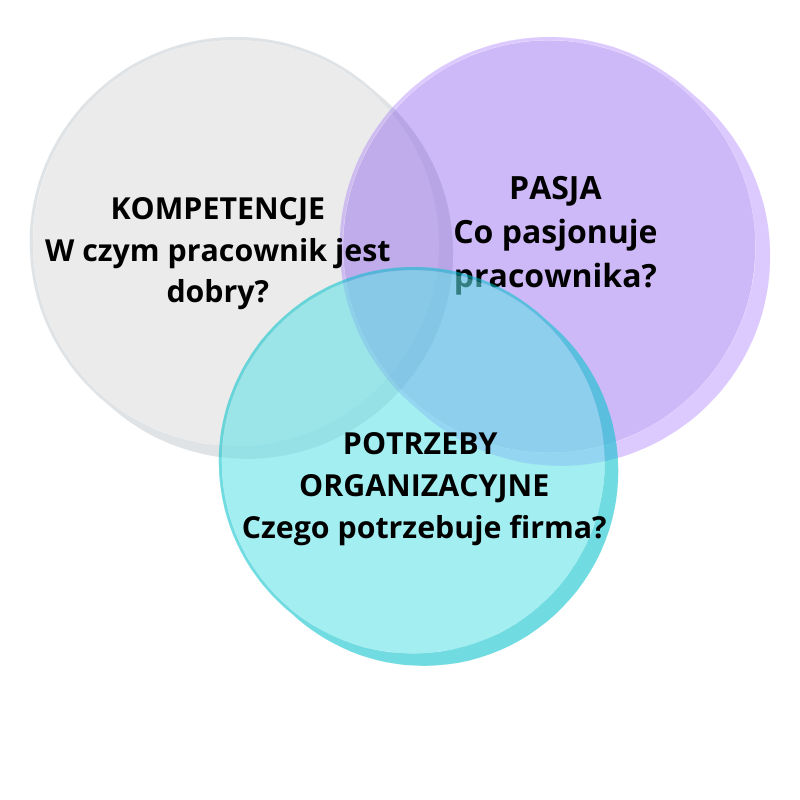To keep up with today's dynamic corporate world, an employee must understand their strengths and weaknesses and have a plan for further development. Without this, it will remain stagnant, because career advancement requires a well-developed understanding of one's own professional needs and aspirations. The Individual Development Plan is an invaluable tool here.
What is an individual development plan?
Individual development plan Individual Development Plan - IDP) is useful for both young workers and experienced managers and executives. It gives everyone the opportunity to have an objective look at the current career path and plan its next stages.
Contrary to the children's short story "Who do I want to be when I grow up", IDP is a concrete action plan. It includes the development of individual steps that an employee should take if he or she wants to achieve a certain level of professional development.

Personal Development Plan is a simple document that helps an employee identify and define their knowledge, skills and abilities. At the same time, it provides him with a well-thought-out path for professional development. Consider it as an annual overview of your current talent, which you can then use to prepare for the future. A well-written IDP can help you improve your performance and strengthen your professional skills. It will also contribute to the improvement of those areas classified as weaknesses today. It is created to help the employee achieve both short-term and long-term career goals. A successful IDP is at the intersection of three key elements: the organizational needs of the company and the passion and competence of the employee.
Do you focus on the development of your employees?
Use effective methods!

Every employee should have the opportunity to develop professionally and grow in their work. An employer who understands this and implements this is aware of power employer branding. Taking the time to discuss each employee's individual needs or career aspirations, at least once a year, is the cornerstone of the Individual Development Plan process. It is for good reason that when something is written down, it is more likely to get done. IDP as a tool facilitating employee development brings a number of benefits. First, it is a commitment between the employee and the manager as to what the employee intends to do to develop and what the manager will do to support him. Second, it is a catalyst for dialogue and exchange of ideas.
How to write an individual development plan?
A good manager sets a good example himself. If he is going to help the employee write an IDP, it is definitely a good idea to have an up-to-date one yourself. Showing or referring to your own plan to the employee is a good role model and sends a clear message that development is for everyone. An individual development plan usually consists of the following elements:

- Professional goals - this part of the plan is to answer the question for what purpose the employee wants to develop. Maybe to do your duties even better? When discussing career goals with the employee, the supervisor should find out what the subordinate is striving for - does he care about another job or a promotion? Maybe it needs additional challenges, because now it is not fully fulfilled? It is also an opportunity to express an opinion on whether the employee's career goals are realistic or to make additional suggestions. Good growth plans often relate to both the current job and at least two potential future employee roles in the company.
- The most important strengths and development needs - this is the place to assess the most important strengths and development needs (often selected from a list of competences or from the criteria of performance review). These may be areas that have been identified in the performance assessment, as part of a 360-degree assessment or based on the opinions of other people in the company (by the way, you may find out how the internal communication in company). As a leader, be sure to take this opportunity to recognize and strengthen your employee's strengths to use them later to meet their developmental needs.
- Development goals for each development need, formulated on the principle of guidelines. For example, "improve your listening skills" or "learn how to lead your product team." The next step is to create an action plan that includes working towards achieving each development goal.
How to introduce an individual employee development plan in the company?
If an individual development plan is to bring the expected results, it is necessary to have an appropriate one communication strategyMake an appointment with an employee for a specific time. Let him talk and discuss each section of the plan. Tune in to active listening.
Ask questions to clarify unclear points. Poll to find out why the employee chose a goal and propose your own development goal if you think the employee missed an important area. Listen to the employee's action plans and give him feedback. Accept his ideas, modify them, reject (explain why) and present your own.

Here are some useful tips on how to behave:
- before you start talking, ask yourself if the issue really requires your comment? will it bring something important and valuable?
- provide comprehensive explanations or additional feedback in an accessible way,
- present additional ideas for employee development,
- be supportive, encouraging and available in the further steps of your IDP activities - and most importantly, stick to these commitments.
- do not consider the individual employee development plan as a performance review. Avoid the role of the omniscient. Don't insist on all your own ideas. Don't talk about yourself.
When you come to an agreement with the employee about his goals and plans, agree together the dates of completion of individual activities. Sign the form with copies for both of you. Signing the plan will be a symbolic, bilateral commitment.
IDP - benefits for the employee and the company
An individual development plan can be a win-win strategy. On a win-win basis, it benefits both the employee and the organization. Employees benefit because implementing IDP helps them increase their knowledge, skills and experience. Improved competencies help them achieve personal and professional goals, both inside and outside the organization. The company, in turn, benefits from developing better employee capabilities, planning workloads, and meeting organizational needs.
It can also shrink with IDP Employees rotation in company. Better employee performance, as well as the added bonus of improved morale and personal job satisfaction, can significantly increase the efficiency of an organization.

As already known, IDP has the goals of improving knowledge and skills and building experience that will be used for the benefit of the organization as a whole. However, the responsibility of the management staff also consists in assigning employees such tasks that allow them to contribute to the fulfillment of the company's mission to the maximum. In a more general sense, it is the responsibility of the supervisor to recognize that employees are the organisation's greatest resource and to help develop those assets. This development is not limited to short-term organizational needs and requirements. It takes into account the needs of employees and provides support to each of them in maintaining the optimism and motivation that lead to the fact that they do their job as best as possible every day.
Individual development plan - what is worth knowing:
What are the benefits of an individual development plan?
An individual development plan is useful at every career stage and brings benefits to both the employee and the entire organization. It is a specific document thanks to which we are able to plan in detail the next stages of our professional career development. A good plan allows you to improve your current performance and strengthen your qualifications and professional competences.
How does the implementation of an individual development plan proceed?
For effective action, you need, above all, an appropriate communication strategy. You should start with a thorough discussion of all issues - sometimes there will be a need to modify some assumptions together. At the end, there is a coherent agreement and symbolic signing of the commitment.
What are the goals of an individual development plan?
The most important thing is to build experience through development and raising competences, which in the future will translate into an overall benefit for the organization. Individual plans assume development, taking into account the needs of employees and their support in this process.

